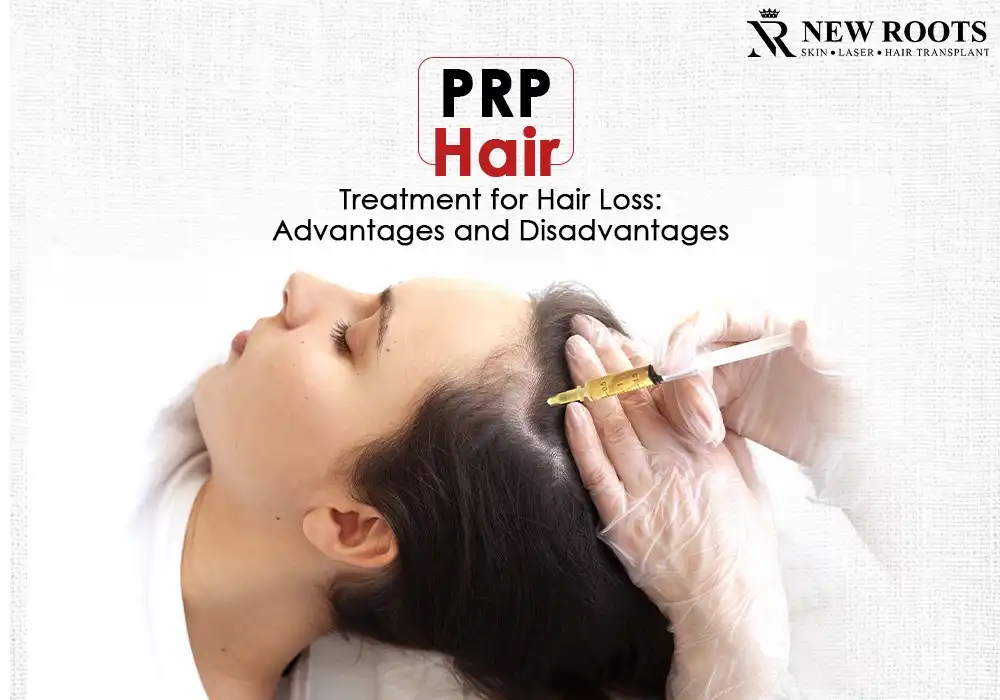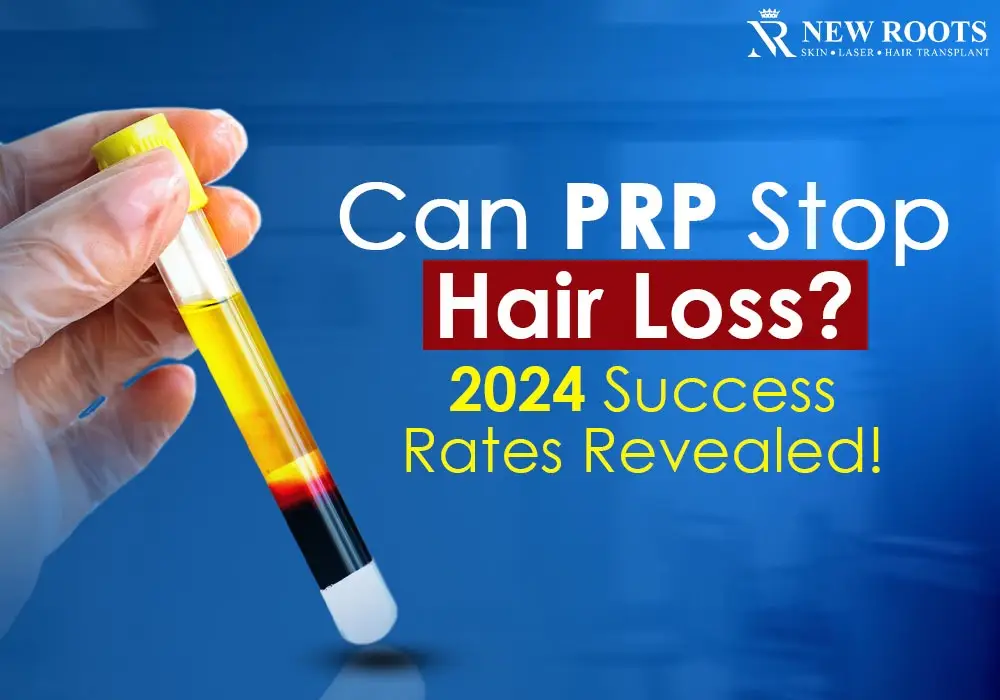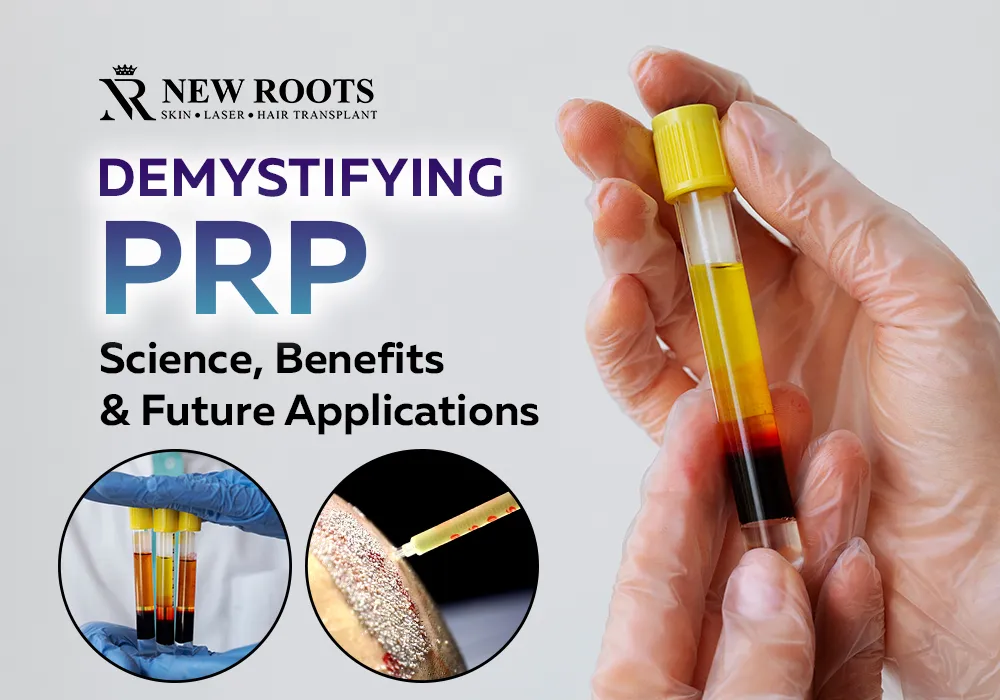PRP Hair Treatment for Hair Loss: Advantages and Disadvantages
Introduction:
Baldness can concern anyone, and people without age or geographical preferences strive to find efficient remedies. Some of the new forms of hair loss management include the use of Platelet-Rich Plasma (PRP) therapy.
This guide will review the advantages and disadvantages of PRP hair treatment to help you better understand what would suit you.
“ So in this article, we will let you know the Advantages and disadvantages of PRP hair treatment and how PRP works.”
Table of Contents
What is PRP Hair Treatment?
PRP Hair Treatment, the complete form of platelet-rich plasma hair treatment, is a patented treatment that utilizes the patient’s platelet-rich plasma to rejuvenate hair follicles and fight hair loss.
Platelet-rich plasma (PRP) therapy is one approach to medical treatment in which a patient’s blood is used to encourage hair growth. The process involves first withdrawing blood from the patient, then separating the blood to increase the concentration of the platelets, and finally, re-injecting the platelet-rich plasma into the particular area of the patient’s scalp.
PRP has numerous growth factors that could enhance hair follicle functionality and create new hair follicles.
PRP hair treatment, commonly known as Platelet-Rich Plasma hair treatment, is a non-surgical treatment that uses ingredients derived from the patient’s blood to revive inactive hair follicles and minimize hair loss.
Here's a breakdown of how it works:
Blood Draw:
This process involves taking a small sample, which is used for any regular blood test in any hospital.
Platelet Concentration:
The blood sample is then centrifuged, forming layers of blood components required for the test. This process concentrates the platelets, which are full of growth factors vital in the healing process of tissue injuries.
Injection:
These PRP preparations are diluted with a specific medium and then injected into the scalp, SCI zones, and the balding area.
Growth Factor Delivery:
The growth factors present in the PRP activate the hair follicles, thereby increasing hair growth and reducing hair shedding. It also promotes collagen and elastin formation, which are essential to the overall health of the scalp and hair. Thus, we know every possible advantage and disadvantage of PRP hair treatment.
Here's a closer look at the mechanisms involved:
Stimulation of Hair Follicles:
PRP releases growth factors that help wake up the invisible hair follicles and help them enter the anagen or growth phases.
Increased Blood Flow:
By improving blood circulation throughout the scalp, the enhanced supply of nutrients and oxygen to the hair follicles effectively boosts their health and growth.
Reduced Inflammation:
PRP contains anti-inflammatory cytokines that can prevent inflammation on the scalp, which causes hair loss.
Improved Collagen Production:
As PRP results in the synthesis of collagen and elastin, the hair shaft is made more robust, and breakage is minimized.
Advantages and Disadvantages of PRP Hair Treatment
Advantages:
Natural and Safe:
Another plus to this treatment method is that it does not employ human-created substances; instead, the platelets are derived from the patient’s blood, eliminating complications such as allergies or infection. This makes PRP a very suitable and exceptionally safe treatment for many individuals.
Minimally Invasive:
PRP therapy is a non-invasive method of treatment that causes some mild pain as it is done through operation Theatre.
As such, unlike hair transplant surgery, which sometimes involves surgery and sometimes results in quite a lot of scalp cell loss, the PRP treatment only takes a little of the patient’s time. Usually, as soon as the Doctor has carried out the PRP treatment, the patient is free to go about his or her regular business.
Suitable for Several Kinds of Hair Loss:
Traction alopecia and androgenetic alopecia (male or female pattern baldness) are treatable with PRP therapy. This means it can also be used in addition to other treatments for hair loss, such as shampoos, pills, and hair transplant surgeries.
Increases Hair Thickness and Density:
Patients are expected to testify of increased thickness and density of the hair after the PRP treatment. PRP was asserted to achieve growing factors that can walk-knowledge hair follicles out of their dormant state and obtain hair strands that are thicker and healthier.
No Downtime:
This PRP hair treatment undoubtedly has no downtime, which is also a big plus. The patients can return to normal activities right after the surgery, making it ideal for people with tight schedules.
Disadvantages
Cost:
A major drawback of PRP hair treatment is the cost implication. The benefits of PRP therapy may be costly, and patients must have many sessions to get the best outcome. However, the total cost of such a plan may even be prohibitive for some patients due to the individual expenses that pile up.
Variable Results:
PRP hair treatment may have different results, which may be due to the patient's genetic characteristics. Some patients may notice a significant improvement from the injections, while others may not even notice a change.
The amount of hair lost, the intensity of the hair loss problem, the ability of the hair to regrow, and the technique used by the specialist who handles the case will determine the success of the treatment.
Requires Multiple Sessions:
For most patients, getting the intended results after PRP therapy usually entails several appointments, usually set a few weeks apart. This means that this ongoing process is inconvenient and can negatively influence people’s lives, so it cannot be recommended for everyone.
Potential Side Effects:
While PRP is relatively safe, some possible complications include scalp sensitivity, inflammation, and low-grade erythema at the injection sites. In a few cases, there may be some severe side effects.
Not a Permanent Solution:
This procedure is not permanent, as patients only notice hair growth for some time after the treatment. Healing treatments, which are mainly required to maintain the outcome, are time- and money-consuming procedures.
PRP hair treatment is most suitable for the following people:
Ideal Candidates:-
Some conditions that may make a person a candidate for PRP hair treatment include Hair loss in men and women of Asian descent, individuals with thinning hair, women going through menopause, and anybody with mild to moderate hair loss.
PRP hair treatment is especially suitable for clients with androgenic alopecia, which is caused by the lack of activity of the hair follicles.
The individuals who would be willing to undergo a PRP procedure may be individuals who are seeking a naturopathic remedy with little probability of experiencing severe adverse effects.
Who Should Avoid PRP?
Common Questions about Advantages and Disadvantages of PRP Hair Treatment:
Side effects: As the PRP solution consists of a person’s blood components, there are few risks of reacting to the solution itself. However, people undergoing PRP treatments for hair loss may experience the following side effects: mild pain at the injection site. scalp tenderness
While it’s common to experience hair shedding following your PRP hair treatment, it’s still advised to consult your dermatologist. They can check the condition of your scalp with a hair check tachometer to observe your hair mass index (HMI) and ensure it’s on the right track.
PRP therapy requires extensive expertise and time. The doctor has to utilize a concise method to ensure results which requires him to spend a lot of one-on-one time with the patient. The price will likely be higher with any procedure requiring constant physician time and skill.






